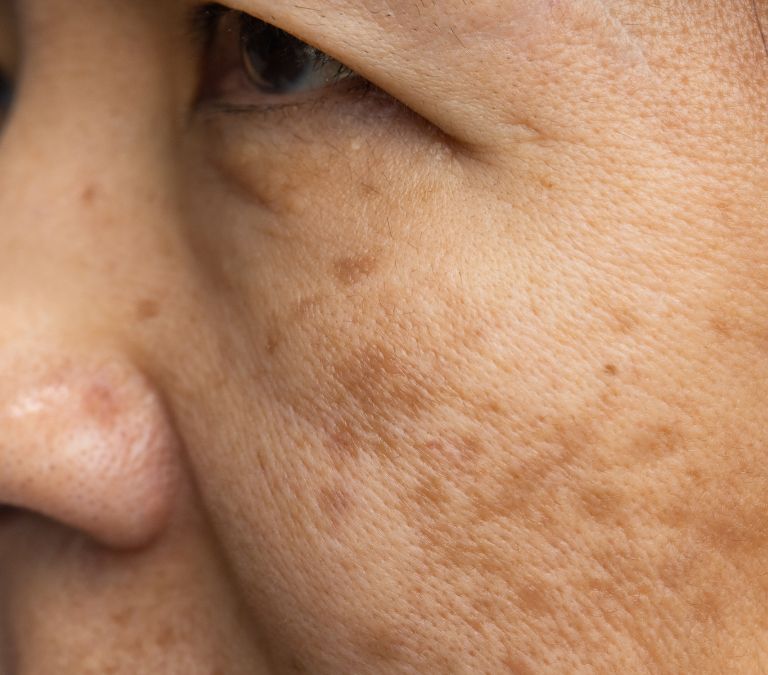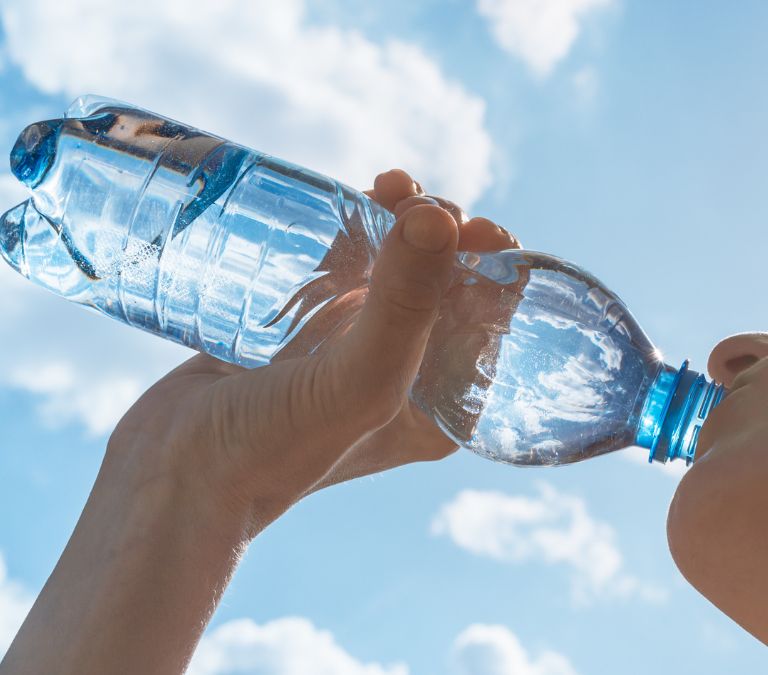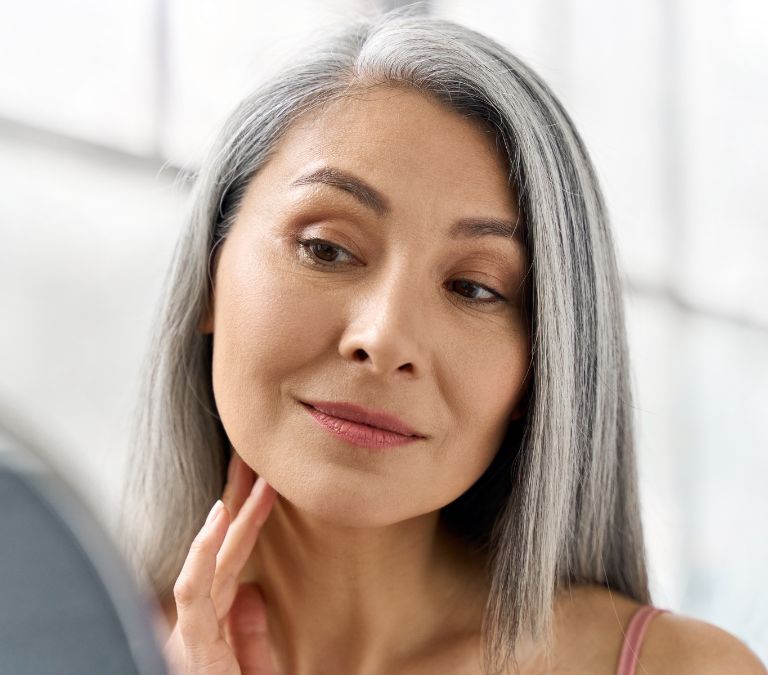As a woman, if you notice changes in your skin or, more specifically, in your complexion during or after menopause, know that you are not alone most women undergoing menopause have reported their skin Changes With Menopause.
Although most women know that menopause will lead to changes in their bodies, what they do not sometimes know is the extent of these changes. It is because the skin remains one of the body parts where the effects of menopause are very much noticeable. The onset of menopause is marked by noticeable changes in the skin and the hair’s extension. At this stage, the skin will be dry, thin, and slack and hair growth reduces on the scalp and increases on the face.
During menopause, depletion in hormone levels, especially estrogen, while androgen remains constant, leads to visible changes in the skin. Estrogen is the hormone that promotes plumpness and water retention in the skin. However, it is important to note that these changes are not sudden but occur gradually, starting from the perimenopausal stage.
When the estrogen level drops, the molecules that help keep the skin moisturized are also lost, giving rise to different skin problems. Estrogen also helps the skin by reducing inflammatory skin disorders, healing wounds, and stimulating the body to produce collagen and skin oil.
This hormone helps protect the body against sun damage, skin cancer, and melanoma. Estrogen depletion during menopause, therefore, makes the skin very vulnerable. Below are the skin problems you are likely to experience due to menopause. You will understand how to improve your skin health.
Different skin problems you are likely to experience due to menopause

- Thinning Skin: One of the skin problems you will likely experience during menopause is thinning skin. Like other skin problems, this condition is caused by estrogen reduction. One of the main functions of estrogen is increasing the blood flow through the capillaries in the skin. When estrogen levels drop, the blood flowing through the dermal capillaries also decreases. It leads to a situation in which fewer nutrients reach the skin’s surface. Over time, the cell turnover rate reduces. The result is a thinning of the outer layer of skin or epidermis. For menopausal women, skin thinning is serious, which usually means that the skin becomes more delicate or fragile. The skin at this age is more prone to tearing and bruising, and with the estrogen levels down, wounds take much longer to heal.
- Hot flashes: Hot flashes are a skin condition associated with menopause experienced by at least half of women undergoing menopausal transition. The deficiency of estrogen in the body, which results from the hormonal changes brought about by menopause, reduces the microcirculation in the skin. Women experiencing hot flashes usually notice the frequent and recurrent emergence of blushes in the chest, palms, soles, neck, and face. Older women experiencing hot flashes often develop a condition known as rosacea as a complication. Rosacea is a skin condition characterized by intermittent phases of flare-ups and emissions. Women who suffer from rosacea experience redness of the central facial area and the eyes. If not treated urgently, the symptoms of rosacea progress from redness of the facial area to bumps, excessive nose tissue, dry and bloodshot eyes, and visible blood vessels.
- Wrinkles: Wrinkles will likely show up on your skin during menopause. During menopause, hormonal changes in the body lead to reductions in collagen secreted by the fibroblast cells in the skin. It not only leads to thinner skin but also causes wrinkles. Studies and trials have shown that for menopausal women, there is a 30% loss of collagen during the first five years of menopause. After the first five years, about 2% of collagen is lost every year for the next 20 years.
In women experiencing this, the skin barrier function is impeded, leading to dryness and increasing the appearance of lines and wrinkles on the body. Menopause also makes the body lose the skin’s elastic fibers and glycosaminoglycan (GAGs), making the skin lose its bounciness. The wrinkles associated with menopause are usually crow’s feet.
The lines appear above the upper lip. The wrinkles previously visible only when a person smiles are now visible all the time. Also, the lines are now more visible and run from the corners of the mouth to the tip of the nose. As time goes on, the facial skin sags, developing large pores and pouches under the eye.
- Acne: Hormonal changes during menopause can also cause acne. Acne results when the estrogen level in the body is depleted. This condition is distinct because, among the skin problems experienced during or after menopause, it is influenced mostly by estrogen and androgen levels in the body. In cases where it has occurred, the emergence of acne is linked to a sharp decrease in estrogen levels while the androgen levels remain constant. It creates a complex situation compared to when estrogen depletion is the root cause of a skin condition.
- Loss of plumpness and sagging: One of the skin changes during menopause is sagging and loss of plumpness. These two conditions are caused when there is a reduction in collagen produced by the skin, resulting from a reduction in estrogen levels. The fat is lost under the skin when the skin reduces or stops collagen production. After this, the elasticity of the skin drops. The drop in elasticity combined with dryness leads to sagging, especially in the cheeks, neck, and jawline.
The progressive loss of GAGs increases the rate at which the skin loses its plumpness. As a result, women experiencing loss of plumpness or sagging will generally find their skin losing its tightness and youthful volume.
- Skin dryness: Skin dryness is one of the more apparent ways menopause affects your skin. It is also more apparent when the air is dry. Dry skin is one of the most common skin issues among older women. Like other skin conditions associated with menopause, the causative factor for dry skin is depleting the body’s estrogen level during and after menopause. Estrogen plays a very significant role in keeping the skin hydrated. It is achieved by estrogen enabling water retention, improving barrier function, and increasing the production of GAGs by the skin.
While menopausal women should be concerned about skin dryness, older women are more likely to suffer from pruritus or skin itching, which results from extreme skin dryness. In addition, as aging in women progresses and estrogen depletes, women experience a strong urge to itch the skin, leading to secondary skin injuries that take longer to heal.
How To Deal With Skin Changes With Menopause – Importance of hydration

For menopausal women, the importance of hydration cannot be overemphasized. After menopause, there is a reduction in the ability of the oil glands to produce oil. It makes the skin drier and can lead to other complications. Before discussing the importance of hydration for menopausal women, it is important to note that while the average adult loses more than 8 to 10 cups of water per day, this loss rate is doubled in menopausal women because of hot flashes and night sweats.
Sweats and urination are the major ways through which the body loses water. Hydration is very important because hormonal changes cause excessive sweating. To remedy this and keep the body more comfortable and healthy, women need to drink more during this period to remain hydrated. Also, the sufficient intake of water and fluids during the menopausal stages plays a significant role in reducing hot flashes and night sweats incidences.
For menopausal women, the impact of estrogen on hydration is sizable. Estrogen receptors in all the body’s major organs, including the skin, aid hydration. During menopause, the functioning of these estrogens reduces, leading to dehydration in the joints, skin, eyes, and even the gastrointestinal tract.
The implication is that menopausal women have a higher level of concern about the hydration of their bodies. Hydration helps in improving the appearance of the body. Without adequate hydration, the skin turns wrinkled and saggy. The body is not retaining enough fluids to keep the structure of the skin firm.
Keeping the body hydrated also helps reduce or moderate the effects of other insomnia symptoms. Menopausal women usually wake up to find their beddings and bedclothes drenched with sweat. It leads to chronic insomnia, anxiety, depression, and the development of rashes on the skin. Sufficient hydration helps to reduce the effects of these symptoms. In this context, drinking the required quantities of water to achieve a hydrated body also helps reduce fatigue and the amount of cortisol (stress hormone). For menopausal women, fatigue results from crashing the body’s metabolism because of the lack of water. It causes a disturbance in the balance of fluids in the body and consequently a lowering of the blood volume. The result is that you suffer from sluggishness, mental fog, dizziness, and headaches. Hydration helps in preventing all these.
Vitamins and nutrients that will improve your skin health during and after menopause

The skin remains a very important human part as it provides a covering and structural support for other body parts. It is, therefore, necessary that you take the health of the skin seriously. Menopausal women experience a wide range of skin problems.
Different treatment regimens and lifestyle changes have been advocated over the years. However, using vitamins and nutrients effectively improves your skin health as a menopausal woman. Below are some of the vitamins and nutrients that will improve your skin health during and after menopause;
- Vitamins C: This vitamin is very helpful in improving skin health during and after menopause. Incorporating vitamin C into a skincare routine has improved collagen production levels in the skin. Combined with vitamin E, vitamin C also give the body glowing skin and boosts the efficiency of sunscreen and other sun protection routines. Vitamin C also helps improve skin health because it is an antioxidant and is structured in a way that helps prevent skin cell damage and maintain skin cell integrity. Vitamin C can be obtained from lemons, grapefruit, oranges, strawberries, Brussels sprouts, and leafy vegetables.
- Vitamin E: This vitamin is a fat-soluble antioxidant. It is critical in preventing skin damage by moisturizing and enhancing skin smoothness. Like vitamin C, vitamin E is also useful for stimulating collagen production in the skin. In addition, for menopausal women already experiencing thinning skin, vitamin E plays a critical role in decreasing the skin’s sensitivity to harsh environments and soothing and aiding tissue repair during the healing of wounds. You should include natural sources of vitamin A in your diet: spinach, mangoes, corn and nuts, and seeds.
- Vitamin A: This vitamin class is important for skin growth and development. Any form of vitamin A in the skin creates a chain reaction. The vitamin A derivative interacts with several enzymes, creating trans-retinoic acid, which is important for repairing the skin and stimulating collagen production. Retinoids are the most common vitamin A used to improve skin conditions.
Over the years, retinoids have improved skin health, especially for menopausal women. Retinoids help reverse the effects of the drop in collagen production by the skin caused by depletion in estrogen levels. While stimulating the production of collagen, retinoids also help reduce wrinkles and maintain the thickness of the skin.
Retinoids are packaged in the form of creams or topical gels. In some cases, the thin application of retinoids can be harsh on the skin, and its effects vary according to skin type. Therefore, it is necessary to consult your physician or dermatologist before using retinol.
Food substances like sweet potatoes, mangoes, eggs, spinach, green leafy vegetables, dairy products, and carrots provide vitamin A from packaged retinoids.
- Vitamin D3: Another very important vitamin for maintaining and improving the skin’s health is vitamin D3. Vitamin D3 is often ingested into the body in dietary supplements. It helps keep the skin firm, activates anti-microbial mechanisms, and supports the skin’s repair mechanisms. The main importance of this particular vitamin is that it helps the skin moderate the damaging effects caused by depletion in the estrogen level in the body. The natural sources of vitamin D2 include high-fat fishes like tuna, mackerel, salmon, and sardines, and processed foods that have been fortified with vitamin D. Examples of these are orange juice, yogurt, and cereals.
- Vitamin B- complex: This vitamin also significantly improves the skin’s health for menopausal women. B- complex helps balance your energy levels, regulate brain function, and improve the body’s metabolism. This vitamin provides the energy that fuels the skin renewal and repair processes. If applied topically, vitamin b- complex effectively clears acne scars and reduces the discolorations caused by dark spots. The natural sources of this vitamin include eggs, seeds and nuts, seafood, and meat.
- Magnesium: Magnesium is an important mineral. It plays a crucial role in helping the body cope with the changes in the skin brought about as a result of menopause. The main function of this mineral is that it helps in combating hot flashes. You can take it in the form of a supplement. It is also present in food substances such as pumpkin seeds, carrots, cashews, almonds, edamame, bananas, and non-fat yogurt.
Hormonal therapy for better skin and general relief of menopausal symptoms
Taking extra care of the skin during and after menopause is very important, and hormonal therapy remains one of the most effective ways of controlling skin conditions caused by reductions in the amount of estrogen in the body. Hormone therapy prescribes and administers drugs that can treat specific menopause-related symptoms. The FDA approves hormonal therapy for menopausal women.
Hormonal therapy is simply treating skin conditions with hormones. This kind of therapy has been proven to minimize the unwanted effects of menopause on the skin. Hormonal therapy also offers some benefits. When done right, hormonal therapy can potentially improve the skin’s ability to retain moisture and maintain elasticity and thickness. Hormonal therapy relieves symptoms such as vaginal dryness, night sweats, hot flashes, reduced sex drive, and mood swings.
Hormonal therapy is also effective in correcting the thinning of the skin and developing lines and wrinkles. Numerous trials have confirmed this. For example, a recent trial showed that women who have not undergone hormonal therapy have up to 30% less wrinkled and dry skin than women who have not.
There are different types of hormonal therapy. Choosing the right one is important if you want to obtain effective results and reduce the risks posed by side effects. Hormonal therapies can be classified according to the type of hormone used for treatment. The most common hormones used in hormonal therapy are estrogen and progesterone. In some cases, women combine both hormones in their therapy. Nevertheless, the choice of hormones is determined by the symptoms predominant for a particular patient.
Another criterion for classifying hormonal therapies is the ingestion method. Progesterone and estrogen can be inserted into the body through implants, vaginal creams and gels, vaginal pessary, rings, tablets, and skin patches. The main synthetic hormone brands in the market are estradiol, estriol, and estrone for estrogen. In contrast, the major brands for progesterone are micronized progesterone, dydrogesterone, norethisterone, and levonorgestrel. It is important to consult your physician on which brands will be compatible with your body’s metabolism.
Hormonal therapies can also be classified according to the treatment plans. The therapy can be continuous or follow a cyclical pattern based on the symptoms being treated and other biological indicators. In the latter, progesterone is taken at weekly or monthly intervals. In contrast, the estrogen is taken continuously until the physician decides otherwise.
Hormone Replacement Therapy is very effective; however, this procedure is unsuitable for everyone. Generally, hormonal therapy is not recommended for women with stroke, liver disease, coronary heart disease, and breast cancer histories. However, the benefits of hormonal therapy outweigh the risks in most cases. Before opting for hormonal therapy, it is important to consult your physician and decide based on the best available information.
Women who want to undergo hormonal therapy ask a very common question. Women want to know if a physician can stop therapy later. Physicians agree that hormonal therapy can be stopped once the menopausal symptoms disappear, typically occurring a few years after therapy. However, women who undergo hormonal therapy for more than twelve months are more likely to develop breast cancer.
Before considering hormonal therapy as a solution to menopausal skin problems you are facing, you need to know about the side effects of this therapy. These side effects include bleeding of the vagina, tummy or abdominal pain, headaches, softness or tenderness of the breast, and indigestion. Suppose you are not ready to endure these side effects. In that case, alternatives such as making lifestyle changes, antidepressants, and drugs such as clonidine and tibolone can be effective.







